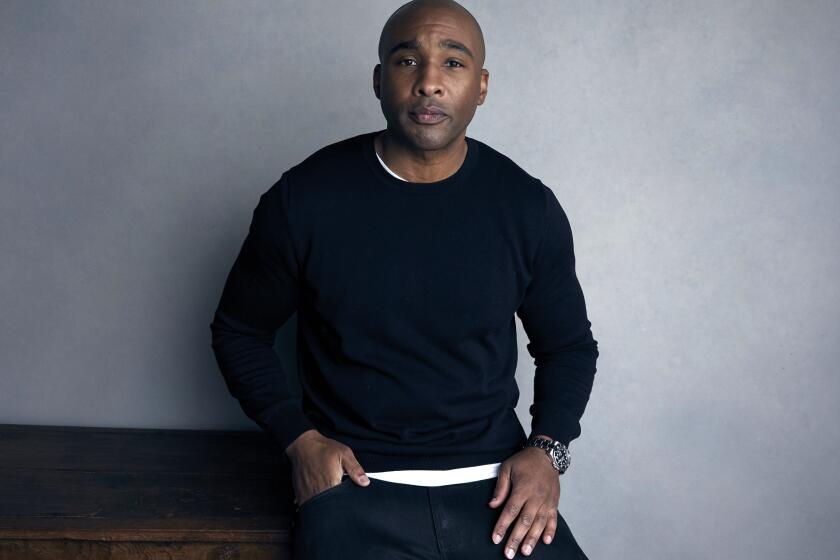Black inclusion gap costs Hollywood $10 billion a year, report says
- Share via
Hollywood’s shortcomings in representing Black voices on and off camera cost the film and television industry $10 billion in annual revenue, according to a new report from consulting giant McKinsey & Co.
The study, released Thursday, examines the persistent gaps in inclusion for Black talent and filmmakers, coming after a year when criticism of the industry’s diversity problems were revived by nationwide protests against police brutality and institutional racism. Read the full report here.
McKinsey & Co. based its analysis on existing research by institutions including UCLA, Nielsen and USC’s Annenberg Inclusion Initiative and conducted anonymous interviews with 50 Black and non-Black industry participants. It collaborated with the BlackLight Collective, a coalition of Black leaders, artists and executives working in entertainment.
A review of senior leadership at the six major media companies shows that the top ranks remain overwhelmingly white.
Studios routinely acknowledge that inclusion is good for business. Walt Disney Co. is making a “Black Panther” sequel and a Disney+ series set in the world of Wakanda from Ryan Coogler, for example.
But the industry has strides yet to make, according to the research, and that means it’s leaving money on the table.
By addressing racial inequities, the report said, the industry could generate an added $10 billion in revenues a year, up 7% from the baseline of $148 billion generated in sales from global theatrical box office for U.S. films and revenues from U.S. streaming services and cable and broadcasting in 2019. The assessment excludes sports and unscripted programming.
“If anything, executives should aspire for even higher upside, including from diversity across all underrepresented groups, as audiences become more diverse and the growth in demand for diverse content far outstrips supply growth,” the report’s authors wrote.
Netflix outperformed industry peers in key metrics when it came to diversity and inclusion. But the LGBTQ community and people with disabilities were underrepresented, according to a USC Annenberg Inclusion Initiative.
While supporting casts for films were 14% Black from 2015 to 2019, just 11% of leads and co-leads were, compared to the 13.4% of the U.S. population. The lack of inclusion was particularly stark behind the camera. Six percent of directors and producers and 4% of writers were Black.
Additionally, Black actors tended to be “funneled to race-related projects, which typically receive lower investment in both production and promotion,” the report said.
Executive suites in entertainment were also overwhelmingly white compared to other industries. About 92% of film executives are white, compared to 60% of the U.S. population. The financial industry, for example, is 88% white at the executive level, according to McKinsey. In TV, executives are 87% white, higher than industries including consumer goods and healthcare.
And much of the burden of providing opportunities in Hollywood fell on the shoulders of Black talent and creatives, the report said. Of the films reviewed, 42% of movies that had at least one Black producer also had a Black director, whereas movies with no Black producers had Black directors 3% of the time.
The study also mentioned that the Hollywood Foreign Press Assn., which gives out the Golden Globe Awards, has no Black members, a fact reported in a recent Los Angeles Times investigation of the nonprofit.
McKinsey & Co.’s paper suggested multiple steps the industry could take to close inclusion gaps.
Those could include setting specific targets for Black and nonwhite representation, and making those goals public. Companies should consider sharing progress reports with the public to ensure accountability and transparency, the firm said. Studios and networks could increase funding for Black stories and create an independent organization to promote diversity.
“These steps would need to be cross-cutting and, ideally, shepherded by an independent, third-party organization that the industry creates,” the report read.
The report did not address inclusion of other specific racial and ethnic groups, including Latinos, who are overwhelmingly left out of Hollywood storytelling.
A recent review of Netflix films and shows by the Annenberg Inclusion Initiative revealed that the streamer had made progress in certain areas over the years, but that Latinos were still largely absent on- and off-screen.
Inside the business of entertainment
The Wide Shot brings you news, analysis and insights on everything from streaming wars to production — and what it all means for the future.
You may occasionally receive promotional content from the Los Angeles Times.
More to Read
Inside the business of entertainment
The Wide Shot brings you news, analysis and insights on everything from streaming wars to production — and what it all means for the future.
You may occasionally receive promotional content from the Los Angeles Times.












